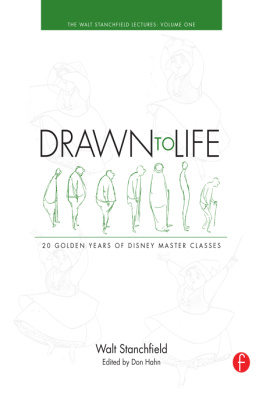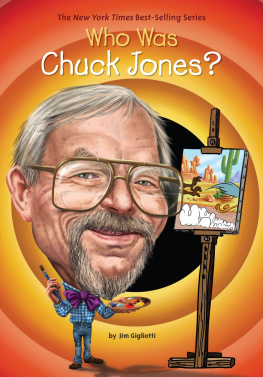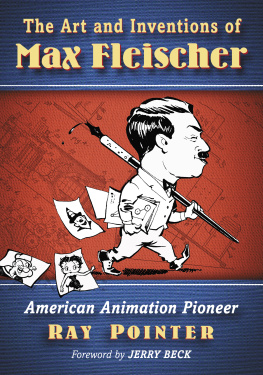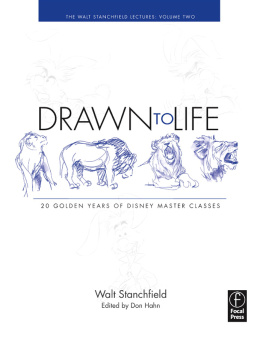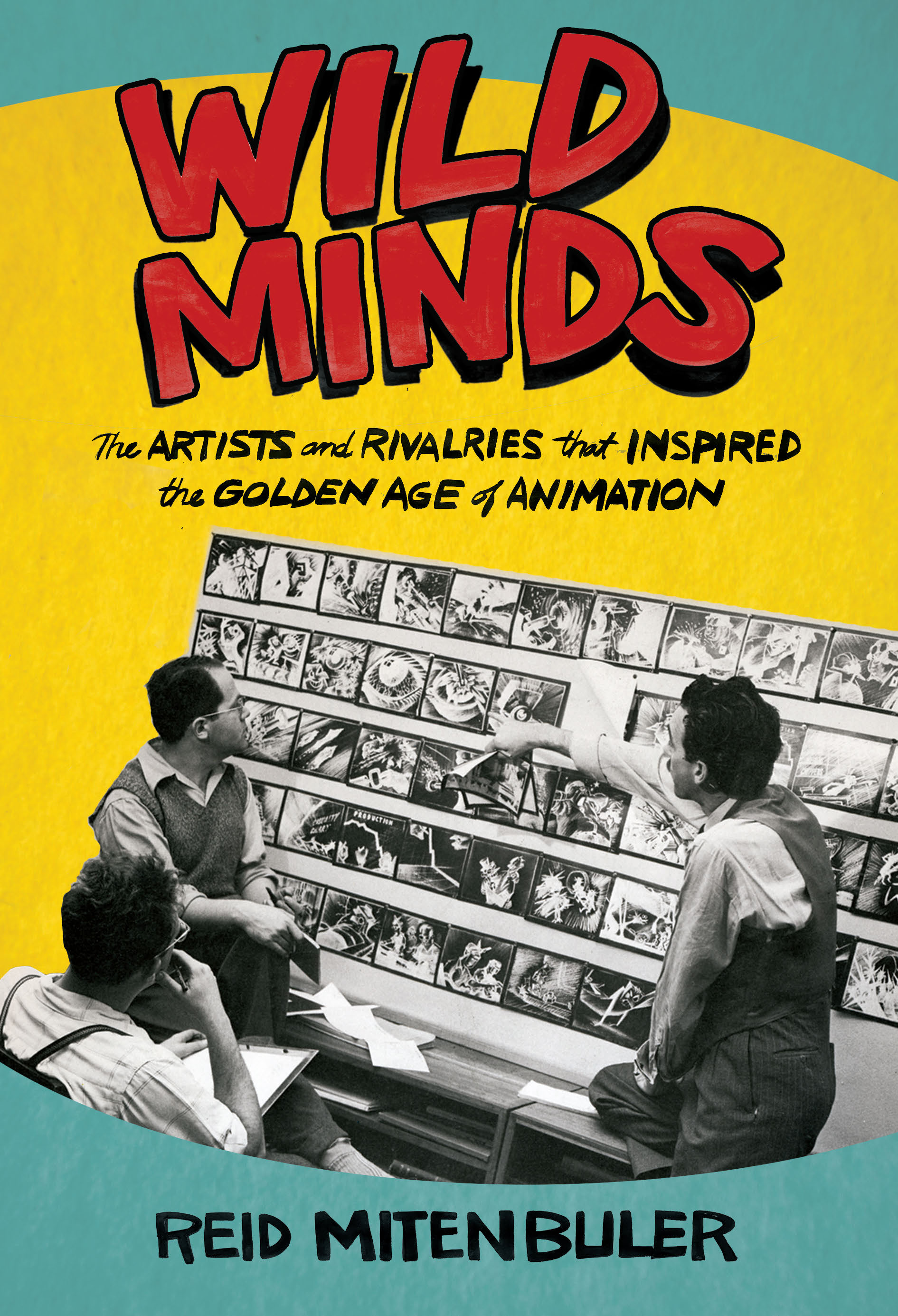Wild Minds
Also by Reid Mitenbuler
Bourbon Empire: The Past and Future of Americas Whiskey
Wild Minds
The Artists and Rivalries That Inspired the Golden Age of Animation
Reid Mitenbuler

Atlantic Monthly Press
New York
Copyright 2020 by Reid Mitenbuler
Jacket design by Gretchen Mergenthaler
Jacket photograph: UPA artists Zach Schwartz, David Hilberman, and Stephen Bosustow in 1943. Courtesy of Sylvie BosRau.
Hand-lettering by Ron Haywood Jones
All rights reserved. No part of this book may be reproduced in any form or by any electronic or mechanical means, including information storage and retrieval systems, without permission in writing from the publisher, except by a reviewer, who may quote brief passages in a review. Scanning, uploading, and electronic distribution of this book or the facilitation of such without the permission of the publisher is prohibited. Please purchase only authorized electronic editions, and do not participate in or encourage electronic piracy of copyrighted materials. Your support of the authors rights is appreciated. Any member of educational institutions wishing to photocopy part or all of the work for classroom use, or anthology, should send inquiries to Grove Atlantic, 154 West 14th Street, New York, NY 10011 or .
Published simultaneously in Canada
Printed in the United States of America
This book is set in 11-pt. ITC NEW Baskerville by Alpha Design & Composition.
First Grove Atlantic hardcover edition: December 2020
Library of Congress Cataloging-in-Publication data is available for this title.
ISBN 978-0-8021-2938-3
eISBN 978-0-8021-4705-9
Atlantic Monthly Press
an imprint of Grove Atlantic
154 West 14th Street
New York, NY 10011
Distributed by Publishers Group West
groveatlantic.com
To Lauren
Whats truer than the truth? The story.
Jewish proverb
Contents
: Make Us Another
1 Slumberland
2 Fantasmagorie
3 The Artists Dream
4 The Camera Fiend
5 Cherubs That Actually Fly
6 This Place Is Full of Sharks
7 How to Fire a Lewis Machine Gun
8 Being Famous Is Hard Work"
9 I Love Beans
10 Bad Luck!
11 Giddyap!
12 Thats Money over the Barrelhead
13 It Became the Rage
14 I Have Become a Ghost
15 The Formula
16 Looks Like Youre Having Fun
17 Are You a Sailor?
18 You Cant Top Pigs with Pigs
19 Max Fleischer Killed Dan Glass
20 Ill Make Money
21 That Goddam Holy Grail
22 We Can Do Better Than That with Our Second String
23 Highbrowski by Stokowski
24 Law of the Jungle
25 Okay, Go Ahead
26 That Horses Ass!
27 A Tough Little Stinker
28 Greetings, America!
29 How Is It Spelled?
30 They Can Kill You, but Theyre Not Allowed to Eat You
31 And Its Going to Be Clean!
32 Silly Rabbit...
33 Flesher
34 Well, Kid, This Is the End I Guess
Insert
A on Sources and Acknowledgments
Bibliography
Image
Authors Note
Since many of the animated cartoons discussed in this book are short, usually less than ten minutes in length, I invite you to watch them as you read this text. Before the digital age, copies of these cartoons were difficult to find, but now its much easier. If you choose to access these films online, however, a necessary word of caution: quality can vary depending on the source, and some versions have been edited into something far different from what their creators intended. As goes for anything you find on the Internet, be cautious.
Make Us Another
, New Jersey, and see the glow from Manhattans lightsbarely two miles east, and yet a world away. He was a struggling young newspaper cartoonist, only twenty-three years old, on the verge of joining that more dazzling world across the Hudson River.
This was in 1915, when the newspaper business was still healthy, at the peak of its clout and reach. Talented artists working within its system were rewarded handsomely. At the New York Journal , a star cartoonist like Winsor McCay made more than $50,000 a year in syndicationa sum that afforded him multiple homes, chauffeur-driven sedans, and the kind of bold wardrobe choices you dont often find in the closets of people with less eccentric careers. It was a grand lifestyle, and one just starting to come within Messmers grasp. His work was occasionally published in the New York World and sometimes featured in Punch , Life , and Judge the most prestigious humor magazines of the day. But there was a problem: these sporadic freelance appearances didnt yet provide a stable living. Dry spells could mean washing his laundry in a bucket of cold water, or having to order the smellier cuts of meat from the butcher. Success seemed close, but he still needed a steady job.
One day, in search of additional work, Messmer packed a portfolio of drawings under his arm and headed to Fort Lee, New Jersey, several miles to the north. In the earliest years of the movie business, before people realized that Hollywood had better light and cheaper taxes, Fort Lee was a leading center of the film industry. Visitors there might catch a glimpse of glamorous stars like Lionel Barrymore posing for photographers, the wind dancing in his hair; or perhaps D. W. Griffith standing next to his camera, shouting into a bullhorn. Messmer hoped to show his portfolio of drawings to the studios and get a job painting background sets for the movies.
Messmer presented his work at Universal, then just an upstart studio. Among his sample drawings was a flipbook featuring a short cartoon about the war then happening in Europe. At this point, animation was still very new; some argued that it could blossom into a great art form, while others said it would never be more than a noveltythe debate was still up in the air. A few movie studios, including Universal, thought animated cartoons had entertainment potential, that they could be used as a kind of hors doeuvre before main features. When Messmer presented his little flipbook, the hiring man paused. , dont you know theyre starting animation? he asked. You look like you could fit in that.
Messmer was excited, but also worried. He had included the flipbook only to make his portfolio look thicker. He had no real understanding of how animation was done on a larger scale, nor did he know whom to ask. It was still a new and mysterious craft; the few people doing it guarded their methods as secrets, the same as magicians with their tricks. Messmer told the hiring man he was interested but admitted he had no idea what he was doing.
The hiring man just shrugged. Go ahead and see what you can do.
Messmer figured out the basics and made a one-minute test cartoon, entitled Motor Mat , about a reckless driver who fixes a flat tire by blowing a smoke ring with his cigar and using it as a spare. To Messmers mind, this was what cartoons should be: wild and fantastic, immune to the logic of physics or reality. Animation could magically bring to life worlds and ideas that live action couldnt.
When other Universal executives saw the cartoon, they gave Messmer a humble space where he could work on his ideas. It wasnt even a proper office, just a rickety desk wedged into an open area between two film sets. Since movies were still silent in those days, the space was noisy from directors on different projects shouting over each other, competing to be heard. Amid this ruckus Messmer set to work drawing, trying to keep his pen from being jostled by crew members squeezing by. A few feet from his desk sat a caged lion, which the studio staff more. Messmer, whose work often involved metaphors, no doubt wondered if this was some sort of omen.



